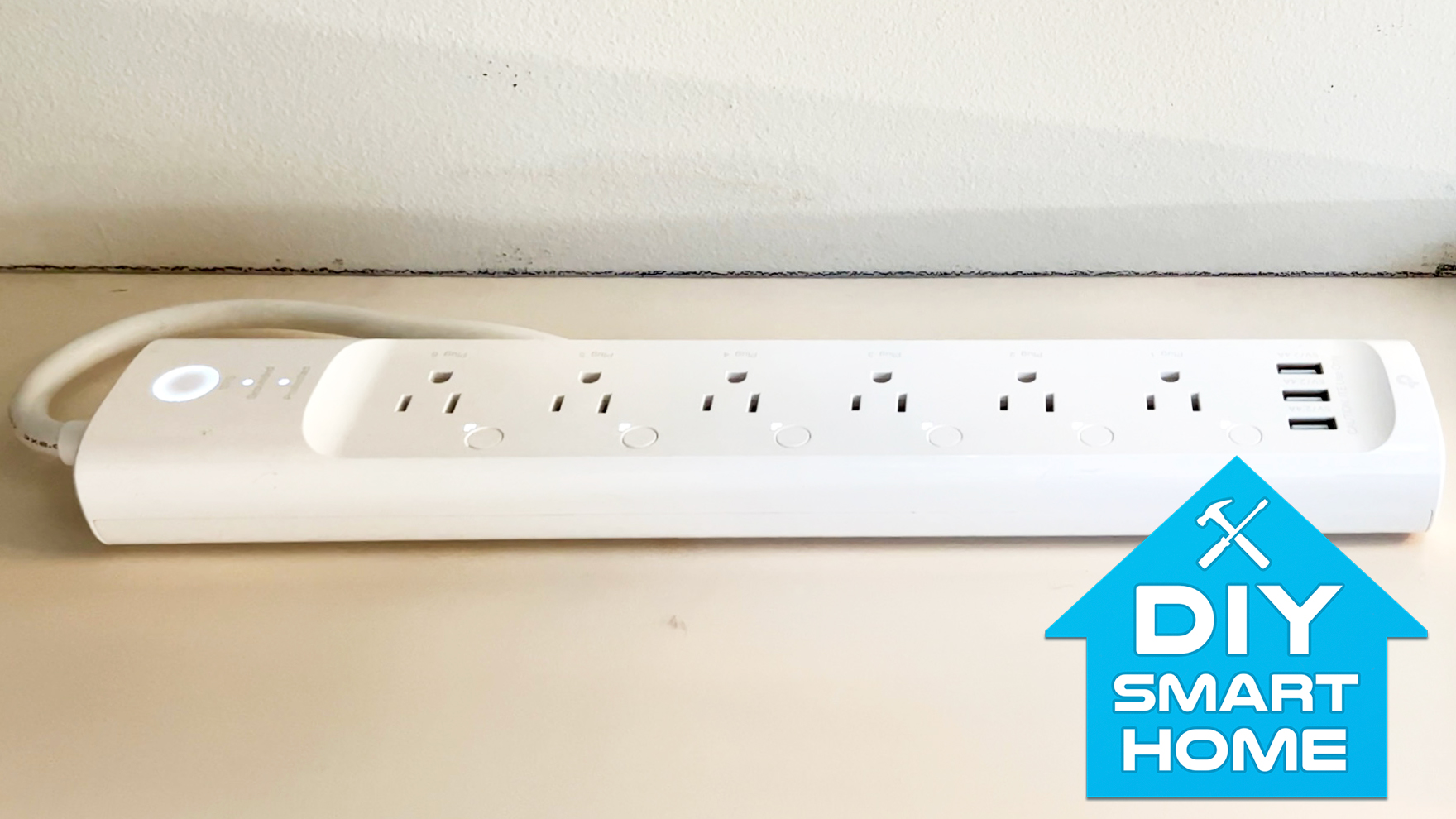This smart home device makes my kitchen so much better — and it can save you money
This $80 smart power strip is a huge upgrade for controlling appliances and monitoring energy consumption

Designing my dream DIY smart home required some larger installations and a crash course on electric wiring, but one of my favorite projects yet was also one of the easiest and most affordable — plus, it could save me more money in the long run.
Everyday kitchen gadgets like my coffee maker, toaster oven and smart speaker require constant power. Then there are the appliances I use less frequently but still need power from an available outlet, like my KitchenAid stand mixer and Anova Precision Cooker sous vide. And finally, there needs to be a convenient spot to plug in a phone or smartwatch charger from time to time.
The couple of outlets built into my kitchen walls weren't cutting it. I ended up outfitting an old surge protector on my counter for a simple fix. But the mess of cables quickly became a safety hazard, not to mention an infuriating eyesore. We never saw a mess of cords all over the Jetson’s home, now did we?
That’s why I bought a smart plug power strip from TP-Link Kasa. Kasa makes a number of the best smart home devices, including a few of the best smart lights and best smart plugs. I’ve used single-outlet smart plugs to control otherwise-dumb lamps or dehumidifiers with Alexa before, so I knew a smart power strip would support similar automations and voice commands. Want to know what else you can do with a smart plug? Check out 10 things you never knew you could do with a smart plug.
I got the Kasa Smart Plug Strip HS300, an ETL-certified surge protector with six individually controlled outlets and three USB ports. Instead of replacing the surge protector on top of my counter, I opted to mount my new one on the side of the counter, where it would remain mostly out of sight but still offer an optimal location to plug in my Amazon Echo (4th gen), Keurig coffee maker and my Cuisinart toaster oven, one of the best toaster ovens around.
You can check out the installation process in the video below from Tom's Guide's TikTok account:
@tomsguide ♬ FEEL THE GROOVE - Queens Road, Fabian Graetz
The remaining three outlets are free for additional appliances, while the USB ports create a hub for charging smartphones or other mobile devices. The USB ports aren’t “smart,” meaning they can’t be turned on and off — this doesn’t bother me, but is important to mention.
Sign up to get the BEST of Tom's Guide direct to your inbox.
Get instant access to breaking news, the hottest reviews, great deals and helpful tips.
All the ways to control a smart power strip
Knowing how to use Alexa, I labeled each outlet on the power strip based on the corresponding device in my smart home dashboard. This power strip also works with Google Home, but I went with Alexa over Google Assistant for a couple of specific reasons.
I could also bypass a voice assistant altogether and since I paired the Kasa power strip to the Brilliant smart home control center next to my front door. Pairing it to my Brilliant system lets me control the outlets alongside the smart switches (not smart lights), my Schlage Encode smart lock and my recently-installed smart garage door opener. Of course, just using the Kasa app for outlet controls is an option too.
Can a smart power strip save you money?
The Kasa app is useful for a different reason though. It lets me monitor how much energy devices connected to the power strip are consuming. I’m able to see total, daily, and monthly energy usage, and recognize which devices might be sucking up power even when I’m not using them.
Based on the results, I might decide to turn off power to certain outlets, or create schedules for outlets to turn off automatically overnight, so as not to waste power. The types of appliances I use don’t waste much energy from what I’ve noticed, but if they were, theoretically, insights from the smart power strip could help me save money on my electricity bill.
Again, a smart power strip isn’t nearly as glamorous as my Alexa-enabled smart faucet or fancy wine fridge, but for $80 at full retail (it often goes on sale with the best Amazon deals for less) it’s an affordable way to make my kitchen more organized and intelligent.
I’m all about telling you how to save thousands on your smart home, so be sure to check out my ultimate DIY smart home guide for more affordable recommendations.
Kate Kozuch is the managing editor of social and video at Tom’s Guide. She writes about smartwatches, TVs, audio devices, and some cooking appliances, too. Kate appears on Fox News to talk tech trends and runs the Tom's Guide TikTok account, which you should be following if you don't already. When she’s not filming tech videos, you can find her taking up a new sport, mastering the NYT Crossword or channeling her inner celebrity chef.

